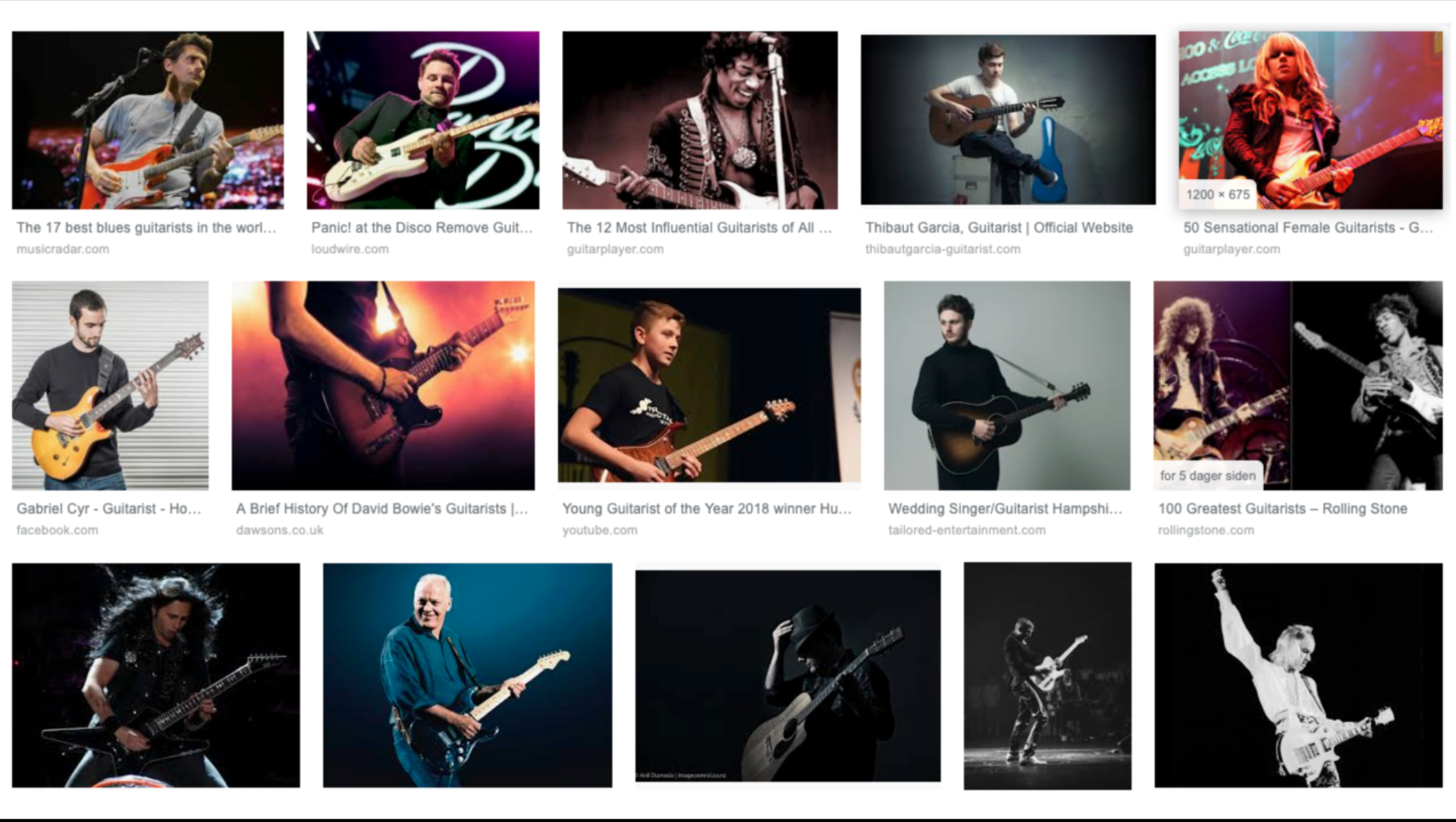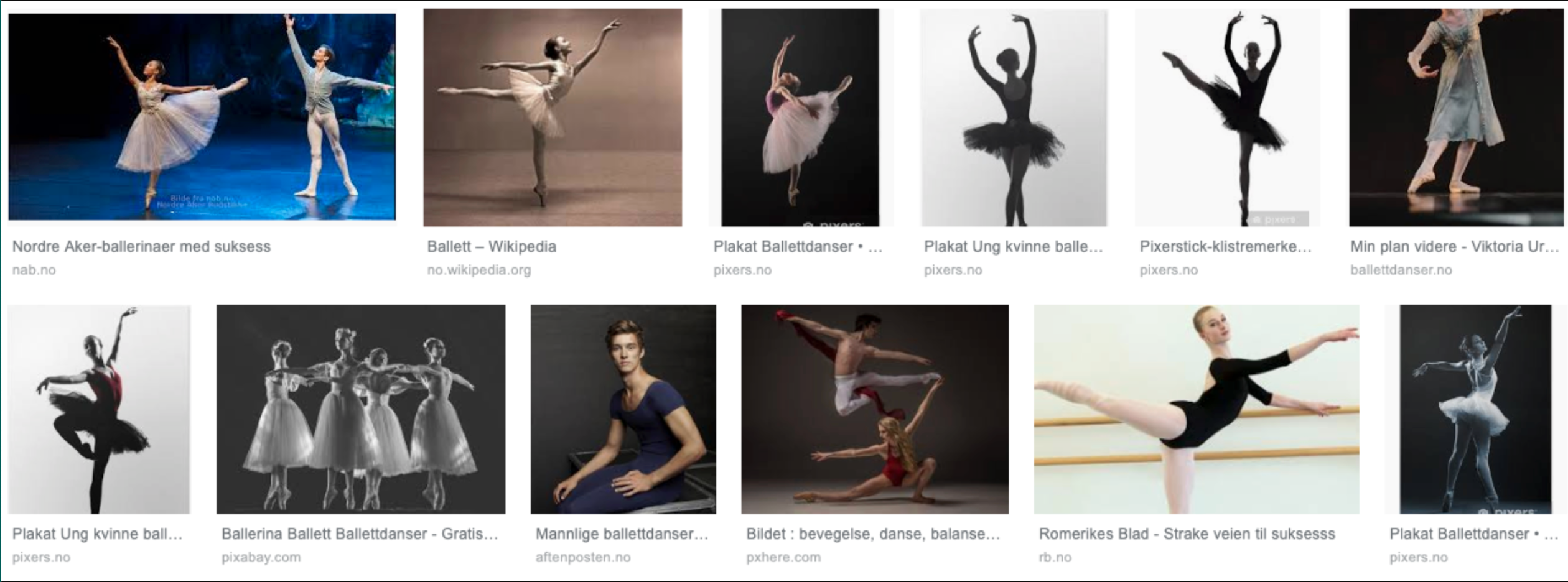Norm-critical perspectives


Norms are unwritten rules, ideas, and assumptions we often take for granted in society. A well-organized society needs norms: a shared understanding of how we should behave. The norm-critical method does not mean being critical of all norms but rather taking a critical approach—reflecting on norms within society. Which norms are beneficial, and which might have negative effects?
If you imagine a guitarist, what images come to mind?
When we do an image search for "guitarist," these are the images we see.

Mostly men, with one woman. Under the image of the one woman, the caption reads "female guitarist." The men are simply referred to as guitarists. This tells us something about gender norms. Additionally, there is a predominance of white men.
What images come to mind when you picture a ballet dancer?
An image search gives us these pictures of a ballet dancer.

Here, there is a predominance of women. Under the portrait of a man in ballet attire, he is labeled as a “male ballet dancer.” None of the images show any people of color or with visible disabilities.
Let’s also imagine a top executive. Whom do we envision?
Image searches show us these faces. Many of them resemble one another.

These image searches reveal norms and expectations associated with various titles and roles.
A lack of diversity can have a self-reinforcing effect. Fewer role models make it harder for girls to imagine a career as a guitarist or for boys to choose ballet as a hobby. Limited diversity in the cultural sector can also serve as a barrier for people with multicultural backgrounds, disabilities, and other minority groups. Being one of the few makes one more visible and vulnerable.
Norm-critical perspectives examine how norms impact individuals, groups, and identities, as well as how they are linked to power within society.
Norms define what is considered normal and who is viewed as normal, while simultaneously creating the opposite: what and who are perceived as different.
No one is inherently normal or different. It is the norms that set the boundaries for what falls inside or outside.
Being labeled as different can be painful and increases the risk of discrimination. Norm-critical perspectives aim to tackle discrimination at its root by changing norms and mindsets.
To promote inclusion and equality, it’s important to be specific. "Everyone should feel welcome here" is a good goal. At the same time, we must identify and counter specific barriers and discrimination faced by underrepresented groups.